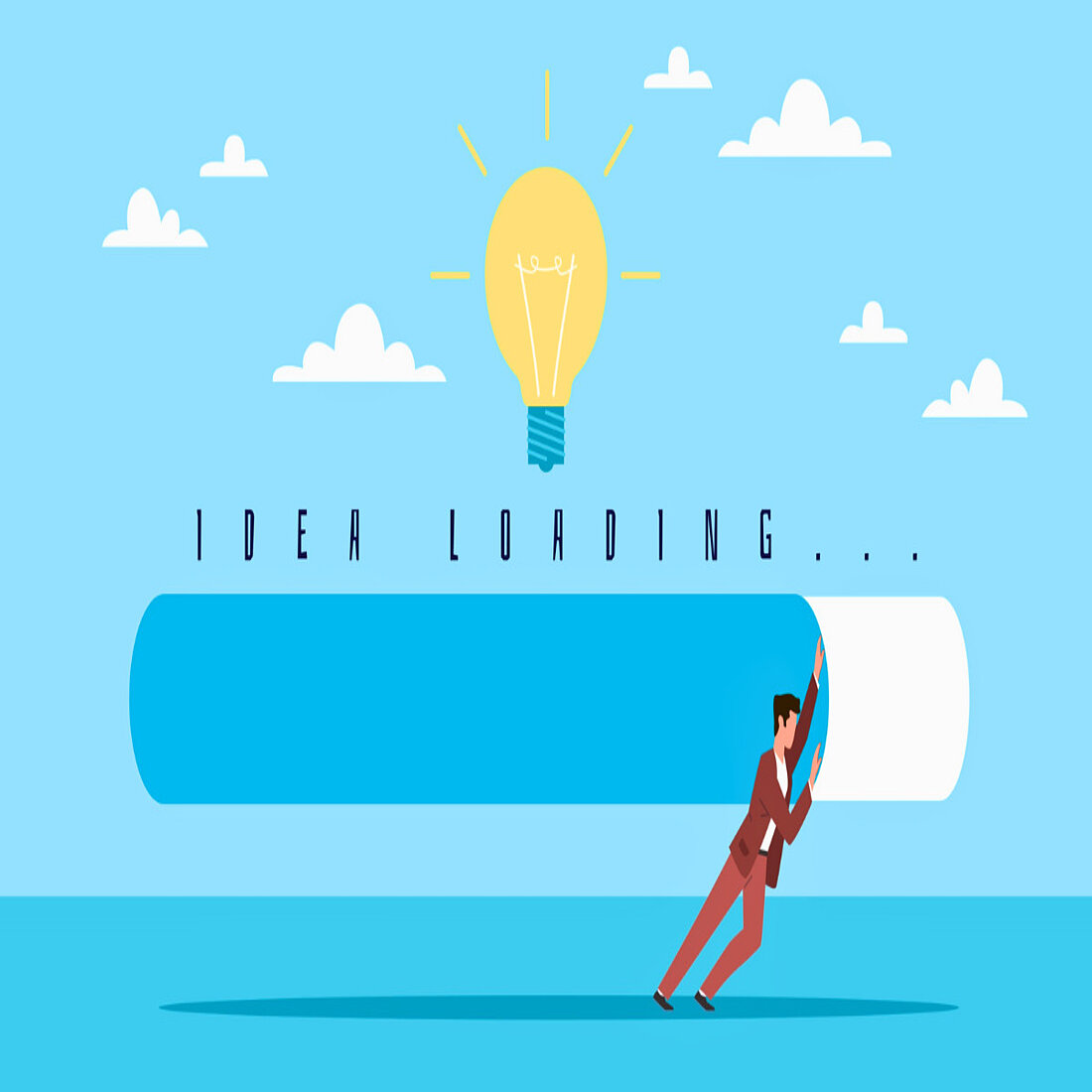- Why Us?
- Features
White Label
For SaaS Platforms & Agencies
Provide our complete analytics suite to your clients, directly within your own interface and with your/their own branding. Discover Analytics-as-a-Service and White Label Analytics. Great benefit, minimal effort.
- Pricing
- White Label
- Success Stories
- Partner
- ResourcesExpand Your Knowledge
CONTENTS
- 1. The Basics of Online Business
- Registering the Name
- Buying Domain Name
- Logos & Trademarks
- 2. Shaping Your Identity
- Defining Who You Are
- Determining Your USPs
- Establishing Your Brand
- 3. Laying the Blueprint for Your Online Presence
- Wireframing & Mapping
- Messaging
- UX Design
- 4. Making the Website a Reality
- Website Hosting
- Website Building
- Maintenance and Security
- TWIPLA: Our Take
- Useful Links
- Other Links
The Complete Guide to Getting the Fundamentals of Your Website Right
This guide starts where any good guide does - right at the beginning. 🦖
It runs through how to breathe life into a website 💨, while laying the foundation for robust Website Intelligence.👨🔬🧪🧟♂️🔬
It’s divided into four main sections:
- The Basics of Online Business - businesses with a sure legal footing are best able to sustain success in the long term. This section will run through what you need to do to reserve digital space for your website and to protect important intellectual property.
- Shaping Your Identity - the competitive nature of the online world makes branding a key consideration during the website planning stage. This section will run through what businesses need to do to create their own identity and distinguish themselves from competitors.
- Laying the Blueprint for Your Online Presence - businesses that have done the basics and shaped their identity are in a good position to begin designing their website. This section will explain how an effective online hub can be developed around these digital fundamentals.
- Making the Website a Reality - the choice of software solutions has a real impact on Website Intelligence. This section will advise on how to animate this digital hub effectively.
After these four sections, you'll also find:
- Our hot take on building an effective website in 2023
- A list of related resources and useful external links
- A glossary of marketing terms relevent to each of the above sections
1. The Basics of Online Business
The website is the epicenter of a company’s digital presence. Develop it right and it will send shockwaves throughout all the channels and campaigns that feed into it. 🔨 🌊 💥
Most businesses have a single website, but some create multiple domains to target different audience types or to make it easier to distinguish between different product types or services. Mitsubishi sells cars, elevators, and cans of tuna, but you wouldn’t know that looking at their automotive website. 🐟 🚗
The localization of languages or country-specific content is another reason to build multiple websites, as is the potential sale of part of the business in the future.
"Most business's first goal is to figure out what their customers want. And that makes sense! You want to know what people are looking for so that you can deliver it to them. As a digital business, you have to explore the treasure trove of data at your fingertips. It's not just about your customers' preferences and demographics, it's about their needs and wants, too. If you're looking to build a customer base, then you need to know what they want before they even know it themselves! You can't do that if you don't have the data from day 1 of your business."
- Leon Gordon, Founder & CEO, Onyx Data
Registering the Name
Everything needs a name. And that’s where any business starts in any real, legal sense.
The company name is your business in lights. It ultimately defines a business, gives shape to its identity online, and helps to impress investors, customers, and potential employees.
It’s also the basis for trademark design and for all brand initiatives. So, you need to find something that really pops. 🙌 🏆 🥇
Business Name Best Practice
- Different from any competitors or well-known businesses
- Easy to remember, spell, and pronounce
- Aligns nicely with industry, brand, and general identity
- Equally available across all external digital marketing channels
- Complies with local and international company naming regulations
Buying Domain Name
A top-level domain (TLD) is the address that website visitors will use to find your website 🏡 - it’s the address for the homepage and the root for all other webpage addresses that are created within it.
One good TLD is the company name, since this makes it easy to find. But it can be anything that is not already trademarked or too similar to a trademark that already exists.
But be careful about what the domain name looks like when combined into one word or you may end up like a computer company called itsCrap.com, a stationary supplier called penisland.net, or a celebrity contact database called whorepresents.com 👀.
Whatever the choice, it should be unique, short, easy to remember, and intuitive to spell.
Domain names often come as part of the package provided by web hosts and website building platforms. They normally cost between $10 and $20, though desirable names can be considerably more - voice.com sold in 2019 for $30 million if you want to splash the cash. 🌧️ 💰
Domain Name Registrars
Domain name registrars are companies that have been authorized by the Internet Corporation for Assigned Names and Numbers (ICANN) to sell domain names.
This makes them effectively the central broker of IP addresses. 🤵
They also control the domain name system and the internet's root servers, and are ultimately responsible for ensuring that users can visit a website and send an email - things that are easy take for granted, but happen because a group of skilled engineers keep their sleeves rolled up and their hands dirty. 🛠️ 🛠️
Choosing a Domain Extension
Domain extensions are the suffixes that follow the domain name in a web address.
They’re like telephone country codes for the Internet Generation ☎️, with common examples being .com, .org, and .net.
Domain choice will not affect the website’s search engine presence or wider performance, but it can impact the business’s reputation among internet users.

As a general rule, businesses should seek the .com extension since it’s most familiar to users. It’s long been the preference of private commercial businesses, though .org is popular with non-profit organizations and there are another 1,800 alternatives (Domain Wheel), with .suck, .wtf, and .duck some of the weirdest ones out there. 🤷
It’s not possible - or useful - to buy every extension for the domain name, and the number bought will reflect on your website goals, audience considerations, and the money you have to throw at it. 💰
But adding additional extensions is a wise investment that will boost localization initiatives and enhance brand reach. And when targeted, it can go some way to alleviating common user errors and enhancing UX.
Domain Best Practices
- Select your domain name at the start of any business planning
- Select a reliable domain registrar, like Domain.com, Bluehost, Hostinger, or GoDaddy
- Choose the right domain extension, with .com the most trusted by internet users
- But if you’re selling overseas or want to focus on a particular country, choose the appropriate top-level country code domain
- Verify the availability of options using a domain availability checker tool
- Confirm ownership of the domain to ensure the purchase completed successfully
Logos & Trademarks
Business Logo
The logo is a company’s most recognizable identifier and the symbol that customers use to recognize the brand.
As the foundation of your identity, it exists to grab attention, make a strong first impression, and distinguish your business from competitors.
While logos can be designed and approved in house, their value to wider business growth means it's common to hire a specialist logo designer. This can cost from a few hundred to tens of thousands of dollars for the average business - BP’s redesign cost them an oily $210,000,000! 🤑 🤑 🤑
Such expense isn’t necessary, but high-end logo design of this kind speaks to the level of detail that can be applied to this task internally. It’s done by a large team of professional designers, marketers, and advertisers. They work closely with the businesses and address multiple rounds of feedback to create a logo that is eye-catching and memorable before anything, but which also reflects:
- Business values and mission statement
- Wider market and competitor research
- Customer preferences
- Design trends
The logo is usually returned as part of a comprehensive brand guidelines that businesses can use to standardize their brand and messaging across all communications. It’ll also include logo variations for different sizes, page layouts, and locations.
Trademarks
By now, you should have important elements of your business’ identity either on your desk or in the pipeline. However, you don’t technically own any of these ideas yet, and the future prosperity of the business demands that you protect it from being used and abused by others! 👤💰
Trademarking provides businesses with legal ownership over their name, logo, and other prioritized intellectual property, and you can trademark anything that distinguishes you and your products from competitors, with phrases, words, symbols, devices, and colors all eligible.
And to understand how far trademarking can go, Tiffany has trademarked a shade of blue, Mo Farah has trademarked his “mobot” celebration, and Facebook has trademarked the word “home”. 👮🏽♀️⛓️⚖️
Trademarks cost between $250 and $750 in the US before legal fees, and need to be renewed every five to fifteen years. They’re some of a startup’s most available assets, enabling it to:
- Increase faster its profitability and valuation
- Differentiate itself and its products or services from competitors
- Be instantly recognizable and communicate quality
- Leverage brand strength to expand into new markets and product offerings
- Attract talented workers
- Exist in perpetuity when renewed every decade
Failing to register trademarks may result in serious difficulties in the future.
Beyond unnecessary legal repercussions, businesses can suffer from brand confusion, loss of revenue, and substantial damage to their reputation. There’s also the potential to be infringing on the trademarks of other businesses, with the potential for fines and prison sentences.
Sustaining digital success is all about controlling a business’ image online, but this is impossible with key intellectual property left untrademarked.
And, while the choice of what to trademark will depend on the type of website and content on offer, some intellectual property to consider trademarking includes:
- Domain, or website name
- Logo(s) or other key design elements
- Business slogans, taglines, or identifying sound effect
- Names for unique products, services, materials, or techniques
- Original videos, articles, or other content
- Social media handles

2. Shaping Your Identity
A business’ identity dictates its success.
If developed from the beginning, it can act as an effective springboard for strong business potential and robust Website Intelligence at what is a testing stage of its lifecycle.
This is the ideal moment to start shaping your business identity, since it will positively influence the choice of name, logo, and marketing strategy - not to mention all the choices that go into website design and development.
Ultimately, it’s about building your business idea into something tangible. 🏗️ 🏗️ 🏗️
Shaping an identity early is no straightjacket to future changes. Nokia started life as a pulp mill, Wrigleys sold soap, and Tiffany sold stationary! ✏️ 💎
Identity is never static, and will need to be adapted to the community that forms around the business, competition analysis, and operational performance. Some businesses even choose to change their identity completely, or migrate to a different industry. Those that do are not starting over from scratch, since they can use their previous brand as leverage.
Simply put, businesses need to know who they are internally and how to describe themselves online. This requires building and sustaining a desirable online brand, and can be achieved with the help of market research and other research.
Consistency of voice is key, but a strong online brand will best enable the website to grow quickly, and to elevate and position the business in a way that will yield greater success.
"Never before have we had so many brands out there. The barrier of entry to starting new businesses has never been lower. The more competition, the stronger the commitment to differentiation should be. But mostly the opposite is true. Constant comparison and benchmarking leads to conformity, and competitors become less differentiated over time. It’s not enough to be just a little bit different. The differentiation needs to be big enough to tilt the decision in your favor. You need to be really different. And that involves risk, change, and venturing into the unknown."
- Peep Laja, Founder & CEO, Wynter
Defining Who You Are
A great business idea can change the world! 🌪 🌪 🌪
But businesses need to know who they are before building a public image if they are to be persuasive, and the first stage of developing an identity is defining their mission, vision, and values:
- Business mission - a short description of the business’ purpose, with reference to their guiding philosophy, technology, and customers as well the products or services themselves
- Business vision - a brief description of what the business will grow into in the future, and which aligns with any other business goals and aspirations
- Business values - the principles, beliefs, and standards of behavior that guide the company’s culture and approach to business
Ultimately, defining who you are means finding a way of reflecting your own personality and values, and there’s a lot of fun to be had here! But once in place, these elements will enable for better financial performance, customer and employee satisfaction, and grow faster.
Determining Your USPs
A business’ USPs are the unique selling points that businesses use to advertise themselves online, and exist to answer that age-old question - why in tarnation should they buy from you??
USPs highlight how the business is different from competitors on the market, why customers should do business with them, and are the essence of what makes them better than others. 🏆 🏆 🏆
There are four types of USP:
- Product characteristics
- Pricing structure
- Placement strategy (location and distribution)
- Promotional strategy
USP-identification can be achieved by carrying out target audience, competitor, and wider market research. It will equally be influenced by the business’ mission and vision statements, which provide further opportunities to align marketing to the preferences, desires, and expectations of potential customers.
Done well, the USPs will clearly articulate the benefits of a business’ products, services, or brand to customers, and explain why they are superior to competitors.
Establishing Your Brand
Branding is the internal ethos of the company or organization that a business values, what it wants reflected in its external messaging, and underpins how they advertize and interact with audiences online.
Done right, branding will align marketing with the vision statement, and enable the company to clearly communicate to people how their business, products, and services are better than competitors on the market.
The brand can be developed, and sustained later using a brand guidelines resource and brand automation tools. It will incorporate the business name and logo alongside their values, vision, and mission. It will also integrate messaging, tone of voice, and visual identity into a living public persona that reflects what their target audience wants.
Trust is a particularly important brand element, and is something that businesses can start building from the beginning by speaking with an authentic voice, establishing relationships though direct social media interactions.
3. Laying the Blueprint for Your Online Presence
Once the business has the legalities stamped and shaped an identity, the website itself can be addressed and the fun can begin! 👷
As the hub that connects a business’ online presence together, it’s worth investing time and energy in designing a website that can enable the company to reach its potential.
Websites have different webpage types that include the homepage, product or signup pages, and information resources that attract traffic and motivate internet users to take action. These need to be designed persuasively, and connected together in a way that’s easy to navigate. Pages need to load quickly, and be securely accessible by users across multiple devices.
This list of requirements isn’t difficult to achieve. Webpage types can be wireframed and connected together using any number of design tools. The online business’ messaging and wider brand is easily accommodated into a website blueprint, and then it can be fueled and fired into the world wide web! 🚀
At Heights, we think about product positioning and simplicity as our go to strategy. There's a lot of choice out there across every category so for us our entire plan has been based around building a company of very very few products but each one being niche and specific. We only have two products which when compared to competitors in the market seems crazy, but we're of the belief that you can go deep or broad but you can't do both well so we go deep and the evidence is there to back up that this is the right call for us. A highly sticky customer base with exceptionally high word of mouth means we know we're executing the right plan.
- Dan Murray-Serter, Co-Founder, Heights, and Co-Founder, Host Secret Leaders
Wireframing & Mapping
A wireframe is a simple diagram or skeleton of each webpage (or app interface). It acts as a plan for all the elements to include, as well as their core functionality. The different wireframes are linked together into a rudimentary sitemap, illustrating the core website navigation structure you want in place.
Once you’ve got this far, you’ll be able to really see what your website will look like! 🤩 🤩 🤩
Each webpage wireframe will develop into a detailed visualization of what the working webpage will look like, with best practice being to follow three key phases of fidelity. This starts with a rudimentary sketch of the webpage, before adding more detailed visualizations, and then finishing with a wireframe that is ready to be converted into a working prototype.
Recommended Wireframing Tools
- Adobe XD - best overall design tool for wireframing
- Balsamiq Mockups - best for low-fi wireframes
- Figma - Best collaborative tool for wireframing
- Pencil Project - best for free, open-source wireframing
- Sketch - complete design tool that specializes in UI
Messaging
Messaging refers to how the branding ethos is portrayed to the outside world - the public face of their inner vision or how they choose to look, walk, and talk when they leave the house. 🚶🏽 🚶🏽 🚶🏽
And with website development, it also refers to the style, voice, and overall personality of content published across the website (as well as in any marketing and advertising once live).
It will be specific and requires approving words for specific characteristics, specific phrases to push, and specific colors and design for any graphic design elements. The messaging needs to be consistent and standardized across the website, and the more consistent it is the better!
Webpage wireframes will include placeholders for messaging in copy, CTAs, videos, and other design elements. These are all opportunities to push key straplines and other branding, to push USP priorities, and to inform visitors about the brand, products, and wider business.
UX Design
User Experience (UX) refers to how individual users interact with and navigate through the website. Think of it as the invisible hand that guides website design, and which will solve common problems that they run into. 🕵️ 🧐
Page loading and wider website performance feed into the overall user experience, as does the capacity of all its incorporated elements to function as they would expect. Another influence is the ease of navigation, and the provision of short paths to purchase or other key information that users will need.
Mobile functionality is another component of UX, as is cross-device compatibility. While people still prefer to use desktops and laptops for long website browsing sessions, smartphones now account for the majority of online traffic. The combined number of active devices is also twice the global population - people switch devices throughout the day, and websites need to anticipate this.
Integrating UX design into the wireframing and wider planning stage will mitigate user pain points and lay the foundation for robust website growth. But once the website is live, website intelligence solutions enable for UX optimization that is guided by real visitor behavioral data - giving you the power to shape it in their image! ✂️ 📋 👌
4. Making the Website a Reality
There’s not much more exciting for us marketers than seeing our websites working for the first time! 🎉 🎉 🎉
But for this to happen, you’ll need to first secure a web host and build the website itself.
And once live, it also needs to be consistently maintained and secure in a fast developing security environment. This can be achieved with various technology solutions that enable for intuitive website development without the need for experts.
Robust Website Intelligence means laying the groundwork for future growth. This requires choosing the right web host from the companies available, choosing a suitable website builder or developer, and ensuring that maintenance and security are addressed from the beginning.
Data privacy compliance is another key aspect of Website Intelligence, and regulatory frameworks now require privacy by design. Practically, this means prioritizing privacy requirements when selecting software solutions, and developing a cookie policy that returns documented, explicit, and opt-in consent from website visitors for cookie practices.
"There's literally never been a better time on earth to set up a new business. New AI tools are launching every day that can do 3x as much as any employee you used to have to hire just to get off the ground. Now, without knowing how to code, you can set up a website, have an army of assistants and use chatgpt as a strategic consultant and sparring partner to 10x your ideas every day. The only thing standing between you and future success is the limit to your curiosity, so go learn."
- Dan Murray-Serter, Co-Founder, Heights, and Co-Founder, Host Secret Leaders

Website Hosting
Website hosting refers to the process of renting or buying online space, and you can think of it as the plot of land that the website is built on, and which the domain name will bring it to. ⛏️
The choice here will have a real impact on website performance, and whether people will enjoy their visit and return for another visit. Retaining them means removing glitches, lags, and bugs wherever possible. UX design is a crucial component of this, but the web host is also responsible for providing speed regardless of the content that has been published.
And beyond hosting the website itself, website hosting opens up some useful other business avenues:
- Boost SEO with same-host satellite pages
- Use cloud storage on host server
- Run a private cloud-hosted app
- Resell web hosting allocation to others
- Host a gaming server through host server
The cost of web hosting to website owners varies significantly, and depends on the type of hosting required and the top-level domain used. Costs start at $30 per year from a reputable provider, but will grow with the website and larger ones can cost $500 and upwards.
Best Secure Web Hosts
- Hostinger – very affordable and secure web hosting solution
- A2 Hosting – security against most malicious threats
- SiteGround – overall the best secure web hosting provider
- InterServer – no-nonsense secure web hosting
Website Building
Website building refers to the process of bringing a website to live, and is the final step in making the website a reality! 👣 👣 👣
Thankfully, in house coding knowledge isn’t essential, and businesses can create DIY websites using website building platforms, or they can choose to hire developers, agencies, or freelancers.
Website Building Platforms
The simplest way to do this is to use a website building platform, and we’ve written elsewhere about the 20 best website building platforms.
Website builders are an intuitive option that is equally suited to IT laymen and small startups without developers on-team. Webpages can be created using a simple drag-and-drop system, and the different pricing plans are aligned with traffic volumes and page numbers - allowing businesses to scale up as they grow.
Consideration: website building platforms are intuitive because they have jettisoned coding complexities. The cost of this reveals itself in design restrictions, slower loading teams, and poorer SEO performance, though website data can be migrated to a fully coded alternative when required.
Independent Website Development
Alternatively, businesses can choose to build their website from scratch. This provides the most flexibility with regard to design, layout, and functionality, as well as control over decision-making. Businesses can contract this work elsewhere, with a simple website costing approximately $500.
Maintenance and Security
Once live, the website needs to be regularly maintained, updated, and protected against the cyberattacks that grow in number and sophistication every day.
These elements can be handled by the web host or website builder - human or platform. But services vary, making it important to plan maintenance and security measures from the outside, and to ensure that they continue to be carried out effectively.
Maintenance
Site maintenance is the work of keeping a website updated and running smoothly, and at a speed that doesn’t put off its visitors. It also includes more general housekeeping tasks such as regularly backing up the website and monitoring its performance, with common maintenance services being:
- Domain name registry and management
- Server maintenance
- Database maintenance
- Site file maintenance
- Content and graphics updating
- Search engine optimization
- File encryption
- Software updates
- Web vulnerability scanning
- Plug-in compatibility planning
- Site backups
- 404 error and server redirect checking
- Spam removal
- Webpage speed testing
The cost of website maintenance can vary greatly depending on whether it's included in website hosting or building platforms, the size of the website, and level of sophistication. Monthly prices start from approximately $5, but can go up to $5,000 for top-level service provision. Huge, high-traffic websites can cost significantly more.
And within this, the most common maintenance costs are the renewal of software and website hosting subscriptions, as well as Secure Sockets Layer (SSL) certification. Other main costs to consider in the future include buying additional domain extensions and investing in a major website redesign or migrating from a website building platform to a fully coded alternative.
Security
Site maintenance includes protecting it from cyberattacks, though website security can also be carried out by other third-party service providers.
It’s an important issue, and particularly so given the impact that a data leak can have on a business’ reputation. Data privacy matters to internet users who worry about the number of companies accessing their data. Data breaches or data malpractice can also result in large fines from data protection authorities. In extreme cases, businesses can be banned from operating online altogether.
TWIPLA: Our Take
Innovation always needs new thinking. The power of language lies in its capacity to open up fresh avenues to explore and to make complicated tasks easier, so we should pat Matt on the back for coming up with “website intelligence” as a 20/20 vision for optimal website optimization in 2023.
It certainly clears a path through what had become a confusing mess of software and internet privacy regulations, with user data underutilized and website owners forced to compromise on non-negotiable elements like design, performance and security.
But to ensure that your website will reach its IQ potential, website intelligence needs to be considered from the very beginning. It’s a great guiding principle for website development, and will undoubtedly make it easier for you to meet your end goals in the future.
It’s also much easier to build website intelligence into website development from the beginning. Data privacy regulations demand that all policies and processes prioritize data security, something that’s much harder to go back to once a business has developed its policies and processes.
There’s no two ways around it - privacy is a massive issue in 2023, and is the cornerstone of robust Website Intelligence. Internet users demand it and regulations have both bite and teeth. 🐶 The net result here for businesses is that any website without Website Intelligence simply won’t work effectively.
The website is here to stay, but the landscape of web development is evolving fast - who remembers marketing before ChatGPT? 🗿 🗿 🗿 Given this, it’s important to stay on top of new trends, technologies, and customer preferences if the website is to remain effective as a conversion generation vehicle.
Useful Links
Our Links
We've tried to condense this Guide down to information and advice that is essential if your website is to reach its full potential.
But if you want to go deeper into any of the sections, we've also written a series of blogs that provides further advice on what we've found to be a common issue in our community of website owners:
- 3 Simple Steps to Starting Your Online Business from Home in 2023: A Beginner's Guide
- Defining Your Corporate Identity: Tips on How to Create Your Company's Brand
- 3 Important Things to Know Before Building a Website in 2023
- Best 20 Website Builders for Your Business: The Free and Paid Options of 2023
Other Links
Top Domain Name Registrars
Top Web Building Platforms
- BigCommerce
- Dreamhost Website Builder
- Hostinger Website Builder
- Gator by HostGator
- GoDaddy Website Builder
- Shopify
- Squarespace
- Web.com
- Weebly
- Wix
- WordPress.org
Top Web Hosts











